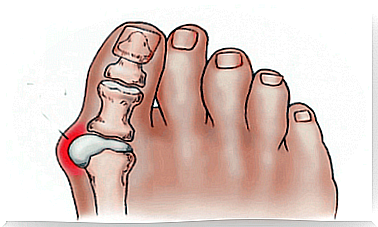Adverse Effects Of The Sun On The Skin

The harmful effects of the sun are sometimes immediately visible on the skin, but the sun also has long-lasting consequences for our bodies. Are you aware of the harmful effects of the sun?
It is true that the sun is a necessary factor for all life and it brings many benefits. Plants, for example, absorb it and it leads to their photosynthesis. It is also a source of human vitamin D. However, exposure to the sun must be reasonable in order to enjoy these benefits.
Exposure to the sun is reasonably healthy, but it also has its limits when it becomes harmful to the skin, eyes, and general health. The main negative effects of the sun on the skin range from the appearance of wrinkles and dark spots to burns and premature aging. Some people also get photoallergic reactions and can even get skin cancer.
Let’s now look at what the harmful effects of the sun are on the skin, for we should all be aware of them.
Adverse effects of the sun on the skin
Sunburn

Almost everyone has experienced the unpleasant symptoms brought on by sunburned skin at some point in their lives. Maybe it happened after a sunny beach day or in the mountains without adequate sun protection. Who could forget the pain and discomfort it brings at night ?!
After sunburn, the skin turns red, sometimes blisters, and can be associated with inflammation. In addition, you feel the heat and the mere normal rubbing of the clothes hurts. In some cases, fever and dehydration may also occur, and in extreme cases, secondary burns.
The sun’s UV rays are the cause of these burns, as they lead to thickening of the epidermis as a protective reaction of the skin against sunlight. Symptoms generally appear a few hours after exposure to the sun and their intensity varies depending on several factors, mainly the ability to absorb such radiation.
Premature aging
The negative effects of solar radiation are cumulative, even with low exposure. Premature skin aging is one of the most visible effects of exposure to excessive sunlight over time. In fact, it is caused by 90% of sun exposure. This adverse effect manifests itself in blemishes, wrinkles and loosening of the skin. This is because excessive sun exposure consumes collagen and elastin.
UV rays are also a major cause of premature aging of human skin when it comes to sun exposure. This is because the rays penetrate the skin and dermis, leading to the formation of a rapid and transient pigment in the form of melanin, which causes the skin to darken.
Sun allergy

Solar allergy can seem really strange when, however, it is considered a natural element that has been present throughout life. However, there are many people who suffer from this disease. It actually affects about 20% of the world’s population. Such allergies are related to other allergies, such as allergies triggered by certain foods, swimming pool chlorine, creams, medications, and even clothing. Allergic reactions may be activated by sun exposure.
Skin cancer
Exposure to the sun can also lead to skin cancer due to cell damage caused by UV rays. There are several factors involved in the appearance of skin cancer. It may be due to, among other things, repeated sun exposure and sunburn, skin phototype, genetic factors, and age.
The most cancer-prone areas of the skin are also usually all exposed to the sun, such as the face, hands and neck. Sunburn greatly increases the risk of skin cancer. Skin type is also a determining factor: people with paler skin and eyes have a higher risk of developing skin cancer.
Family history of melanoma is also a determining factor, as is age. Thus, people over the age of 40 have a higher risk of developing skin cancer. Melanoma and carcinoma are the main types of skin cancer.
- Melanomas are quite aggressive and very malignant types of skin cancer.
- Carcinomas are the most common and usually progress slowly, but are easier to treat.
All in all, we hope you understand how important it is to protect yourself from the harmful effects of the sun. As with everything, prevention is a better option than cure afterwards!









